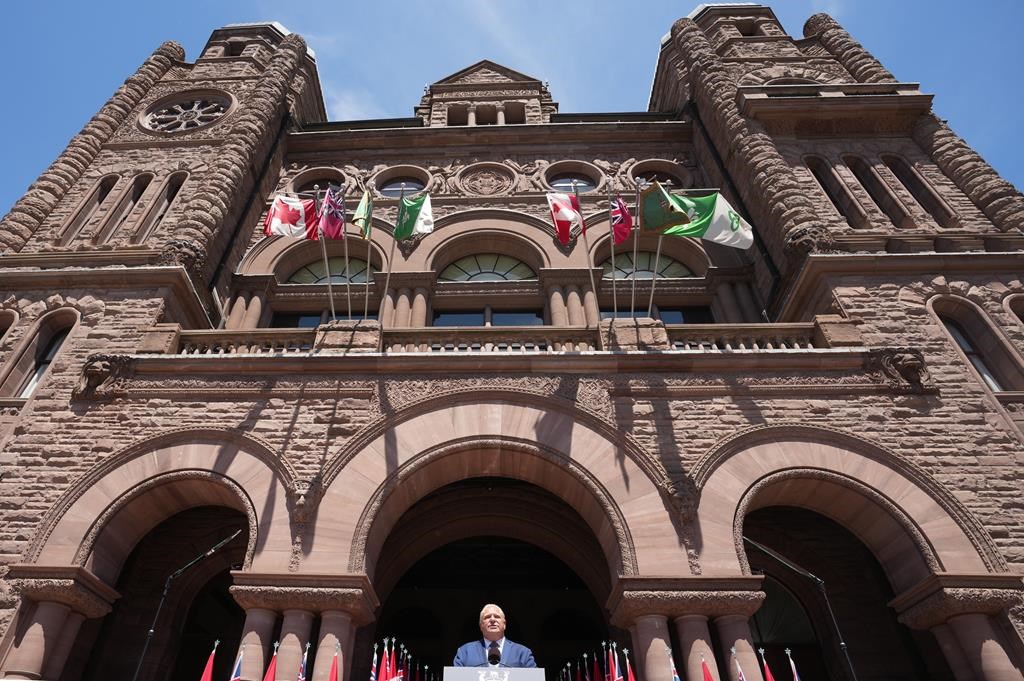Ontario’s fiscal watchdog is projecting a deficit that’s $5.4 billion smaller than the most recent government projection because of lower-than-anticipated program spending.
In a report issued Tuesday, the Financial Accountability Office said it arrived at its $8.1-billion deficit figure after finding that the province spent less than planned across all programs over the last fiscal year.
The Progressive Conservative government had projected a deficit of $13.5 billion in its most recent budget.
Higher-than-projected revenue also contributed to the lower deficit projection. The watchdog report said its estimated revenue for the 2021-22 fiscal year was $1.6 billion higher than the government’s.
Financial accountability officer Peter Weltman said the difference in the deficit figures can probably be attributed to the unpredictable nature of the pandemic, as economic forecasts have been “up and down” over the last two years.
“Given the huge uncertainty because of COVID, I think that explains why there is such a discrepancy,” he said.
But while the pandemic may explain this year’s finding, Weltman noted that significant underspending by a government would be worth looking into if it becomes a lasting trend.
“If we’re starting to see these sorts of things as a regular feature, then it’s worth having a deeper look,” he said.
The watchdog’s report found the province spent $7.2 billion less than planned in the last fiscal year.
The FAO looked at changes to the province’s spending plan, unaudited spending results and assessed the year-end status of the province’s unallocated funds, along with its updated budget deficit projection.
It found the government spent $4.2 billion more in health than in the previous year, but spending still was $1.8 billion under what was planned for.
More was spent than the previous year on public health, physician payments and long-term care home operation, as well as major hospital projects, the report said. That spending was offset by lower government spending on small hospital projects and hospital operations.
In education, the report found the government spent almost $1 billion less than the previous year, largely due to less spending on pandemic-related programs.
There was also less COVID-19-related spending in the “other programs” area compared with the year before, an area which includes transit money for municipalities, homelessness support and support for businesses and workers.
There was also a $1.8-billion balance left in unallocated contingency funds from the last fiscal year – the FAO said the savings would go to reducing the province’s budget deficit and net debt.
Opposition parties were quick to criticize the lower-than-planned spending findings and drew connections to emergency room closures being reported in the province.
“Today’s report from the Financial Accountability Office confirms what we expected: the (Premier Doug Ford) government has been under spending on critical services like healthcare,” Green Leader Mike Schreiner said in a written statement.
“If keeping emergency rooms open doesn’t warrant spending – what does?”
New Democrat health critic France Gélinas said it was “dangerous and callous” for the government to have “shortchanged” health care as the system struggles.
Catherine Fife, the NDP’s finance critic, described $7.2 billion in underspending as “cuts by stealth” when people needed help, particularly in health and education.
A spokesman for the Treasury Board president pointed to “record investments” by the Progressive Conservative government such as infrastructure projects in both health and education, and noted that actual spending will be reported later in public accounts.
“The nature of the FAO’s report means that it’s a snapshot in time and is not an accurate reflection of government spending,” Richard Mullinsaid in a written statement.
“We have a plan to get it done by building Ontario while supporting those who need the help the most.”
This report by The Canadian Press was first published July 19, 2022.



